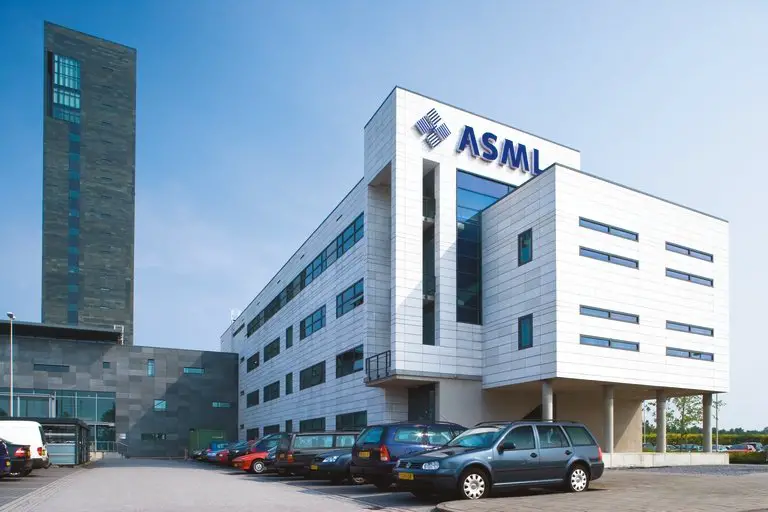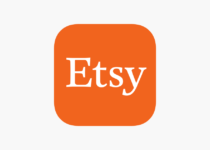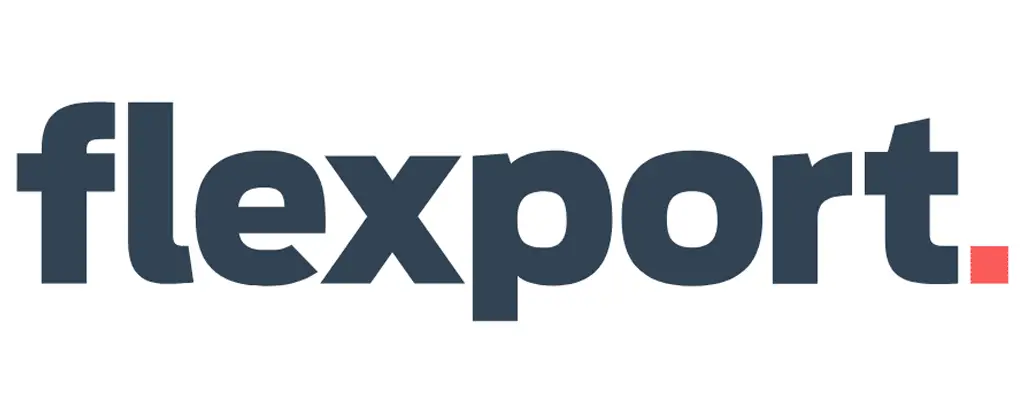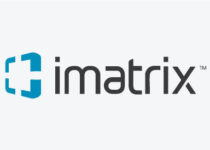ASML Competitors and Similar Companies

ASML Holding N.V (also known as Advanced Semiconductor Materials Lithography) is a coalition of private sectors that chose to establish a semiconductor fabrication company that designs machines for wafers (chips) used by companies dealing in Electronics, Robotics, and Artificial Intelligence.
A fat lot of technology industries depend on semiconductors for the design of hardware tools. ASML resides in the US and a few other territories where the semiconductor business booms. The company has offices in France, South Korea, Taiwan, Netherlands, the United States, Ireland, Israel, Italy, the United Kingdom, China, Hong Kong, Japan, Malaysia, Singapore, Belgium, and Germany.
ASML provides machines that create semiconductor chips supplied to around 16 countries. Some of ASML’s biggest customers are Samsung, TSMC, and Intel. As the lone manufacturer of these machines, ASML has taken a monopolistic charge of advanced chipmaking.
| NAME | ASML Holding N.V |
| FOUNDED | 1984 |
| HEADQUARTERS | Veldhoven, Netherlands |
| SIC CODE | 85224 |
| STATUS | Private Company (Coalition) |
| INDUSTRY SECTOR | Semiconductor & Lithography Manufacturing |
| EMPLOYEES | 32,016 |
| TRADING SYMBOL | Nasdaq: ASML |
How ASML Makes Money
Sales – Lithography systems/Chip-making Machine
ASML sells a chip-making machine for $150 million. Extreme and deep ultraviolet lithography machines are used by companies like Samsung, Intel, and Global-Foundries.
Patent – Monopoly of chip manufacture and sales
ASML dominates over 60% of the market sales of lithography machines and patents an equivalent portion of most accurate generation silicon chip production using extreme ultraviolet light (EUV).
ASML Similar Companies
The 10 biggest rivals to ASML are;
- Brooks Automation (AZTA)
- Lam Research (LRCX)
- Desktop Metal (DM)
- Energy Recovery (ER II)
- Velo 3D
- Canon
- Axcelis Tech (ACLS)
- Veeco Instruments (VECO)
- Cricut (CRCT)
- MKS Instruments
ASML, among the top competitors in photolithography, is not the only manufacturer of semiconductor-designing machines that use light to etch integrated circuits onto silicon wafers. ASML competes squarely with Japan’s Canon and Nikon. However, with the Dutch company’s market attractiveness, its share has come close to 62% of the world’s photolithography market share since 2005.
ASML, like other major alternatives, has used other special EUV machines to design alone and has harnessed “ultraviolet” (EUV) light, with a wavelength of just 13.5 nanometers. Shorter wavelengths allow for smaller components to be etched, which is important for chip manufacturers trying to keep up with Moore’s Law, which allows a larger number of components to be squeezed into an area. Certain silicon doubles about every two years.
The world’s three major chipmakers – Intel in the US, Samsung in South Korea, and Taiwan Semiconductor Manufacturing Company (TSMC) – have become dependent on ASML products as the rest of the industry. Technology depends on them. The company’s performance reflects this growing dependence. Its revenue grew 8% in 2019, to 11.8 billion euros ($13.2 billion), despite a slump in its highly cyclical semiconductor business. While EUV devices accounted for only 26 of the 229 lithography machines the company sold in 2019, they accounted for a third of sales.
The company expects that number to grow to three-quarters by 2025, as other chipmakers move to existing “deep ultraviolet” technology.
Now, let’s discuss more of the ASML similar companies.
Brooks Automation (AZTA)
Brooks Automation, Inc. (now known as Azenta) was founded in 1978. The company is based in Chelmsford, Massachusetts. The company is a supplier of automation, vacuum, and many markets, including semiconductor production, manufacturing equipment, and health sciences. Brooks Automation works with automation, vacuum, and metal solutions. The company works with the semiconductor manufacturing industry worldwide.
Brooks Automation provides automated vacuum and metal solutions, primarily in the global semiconductor manufacturing industry. It operates in three phases: Automation Systems, Key Parts, and Global Customer Performance.
The Automation Systems component provides automated products for vacuum and atmospheric equipment, as well as small natural products, products for measurement and alignment, and air quality control.
Company rivals in the cryogenic vacuum pump market are SHI and Genesis. Its competitors in the vacuum measuring market include MKS Instruments and Inficon. It also identifies competition from Applied Materials, Novellus, KLATencor, and TEL.
Similarities between Brooks Automation and ASML
- Both companies offer cutting-edge lithography for chip production solutions that serve large-scale industrial demands
- Both companies produce bio-sample storage, genomics, and DNA/gene synthesis devices
| Annual Revenue | Funding | Headquarters | EMPLOYEES |
| $1.09 billion | ~ $3 billion | Massachusetts, US | 2,984 |
Lam Research (LRCX)
Lam Research (LRCX) was founded in 1980 by Dr. David K. Lam. Second in manufacturing in the Bay Area after Tesla. Lam Research is headquartered in Fremont, California, Silicon Valley.
Lam Research is an American supplier of wafer manufacturing equipment and related services to the semiconductor industry. Its products are mainly used in pre-wafer processing, including steps that make up active parts of semiconductor devices (transistors, capacitors) and their cables (interconnects). The company also builds wafer-end packaging equipment (WLP).
This company is a major competitor to ASML as a pre-wafer processing company. Lam Research provides back-end semiconductor chipping software language.
Similarities between Lam Research (LRCX) and ASML
- Both companies manufacture machines for front-end chip-making
| Annual Revenue | Funding | Headquarters | EMPLOYEES |
| $14.63 billion | ~ 11 billion | Fremont, CA | 51-100 |
Desktop Metal
Desktop Metal is a technology company that designs and sells 3D printing systems. Desktop Metal has its headquarters in Burlington, Massachusetts. The company has been in business since its inception from investors such as Google Ventures, BMW, and Ford Motor Company. The company has raised $338 million in venture capital. Desktop Metal launched the first two products in April 2017 – Metal 3D printing systems for studio systems, engineers and small-scale production, and production systems for manufacturers.
In November 2019, the company launched two new printer systems. The shop system is designed for machine shops, and industrial textile composite printers use automatic fiber placement. The World Economic Forum nominated Desktop Metal as a technology pioneer in 2017.
Similarities between Desktop Metal and ASML
- Both are top marketers of 3D printing systems in the US
- Both provide affordable semiconductors and carefully lithographed chips
| Annual Revenue | Funding | Headquarters | EMPLOYEES |
| $112.4million | $438 million | Burlington, Massachusetts, US | 1,370 |
Energy Recovery (ER II)
Energy Recovery is a public company that develops technologies to solve the complex challenges of the industrial fluid flow market worldwide. Based on the Pressure Exchanger Technology platform (PET), the company manufactures solutions that make industrial processes more efficient and sustainable.
The company began by developing wafer-based solutions for the breakthrough invention of desalination. Energy Recovery has grown into a global company that accelerates the environmental sustainability of its customers’ businesses across multiple industries.
Energy Recovery is headquartered in the San Francisco Bay Area. The company is a global team with local sales and technical support, developing technologies that reduce customers’ operating costs.
Solutions increase long-term value and productivity in operations by reducing energy consumption and life cycle costs such as equipment repair, maintenance, and downtime.
Similarities between Energy Recovery and ASML
- Both create home-build prefab designs that are easy to ship, pack and assemble
- Both companies build prefabs with emergency units installed in peculiarly similar modules
| Annual Revenue | Funding | Headquarters | EMPLOYEES |
| $0.10 billion | $6.2 million | San Francisco, US | 214 |
Velo 3D
Velo 3D is a private 3D printing solutions company founded in 2014. Valeo, originally, is a French global automotive supplier headquartered in France. Valeo 3D is a subsidiary 3D printing company regionalized in the US. Valeo 3D provides a wide range of products to automobile manufacturers and aftermarkets. Velo3D is a digital manufacturer that prints metal in 3D using sapphire 3D printers and flow print preparation software.
Similarities between Velo 3D and ASML
- Both design with end-to-end manufacturing solutions to help engineers solve mission-critical/complex circuit designs using 3D printing
- Both provide the opportunity for research into metal additive chip manufacturing
| Annual Revenue | Funding | Headquarters | EMPLOYEES |
| <$27.44 million | ~ $205 million | Campbell, CA | 195 |
Canon
Canon Inc. is a private lens and silicon (graphite) precision engineering company founded in 1917. Canon is a Japanese multinational company headquartered in Tokyo. The company specializes in imaging optics (in-ground lenses) and industrial products such as cameras, optical microscopes, medical equipment, scanners, printers, and semiconductor manufacturing equipment.
Canon has developed a series of lithography devices for different semiconductor applications requiring fine technical requirements for standard semiconductor wafer processing. Canon Precision semiconductor lithography devices commonly referred to as steppers or scanners, transfer circuit patterns from masks to wafers or plates.
Similarities between Canon and ASML
- Both companies are top sellers of DUV lithography machines, selling ~ 413 units in 2020
- Canon and ASML produce Nanoimprint lithography
| Annual Revenue | Funding | Headquarters | EMPLOYEES |
| $30.6 billion | N/A | Ōta, Tokyo, Japan | 26,246 |
Axcelis Tech
Axcelis Technologies develops, manufactures, and maintains capital goods for the global semiconductor industry. The company manufactures ion implantation systems such as high-current and medium-current implanters and high-energy implanters, as well as curing systems used to manufacture semiconductor chips. The company was founded in 1995 and is headquartered in Beverly, Massachusetts, USA.
In 2000, Eaton Corporation turned around its semiconductor manufacturing equipment business as Axcelis Technologies. In 2015, Axcelis sold its headquarters under a leaseback agreement.
Similarities between Axcelis Tech and ASML
- Both companies have a resemblance to each other in terms of equities
- ASML Holdings and Axcelis help to improve semiconductor fab for precision and purity
| Annual Revenue | Funding | Headquarters | EMPLOYEES |
| ~ $662 million | $15 million | Beverly, MA, US | 1000-1200 |
Veeco Instruments
Veeco operates as an equipment supplier with worldwide channels of supply. The company has its headquarters in the U.S. Veeco Instruments designs and builds processing systems used in semiconductor and compound semiconductor manufacturing. Other processed semiconductor chips are crafted for data keeping and applications such as photonics, electronics, energy-saving & conversion, and display technologies.
All the fine technologies are used to ensure a spelled artificial intelligence, virtual and augmented reality, and high-performance computing, among other qualities.
Similarities between Veeco Instruments and ASML
- Both companies develop semiconductor process equipment
- Veeco and ASML set standards to maximize uptime and minimize the cost-of-ownership of owned products
| Annual Revenue | Funding | Headquarters | EMPLOYEES |
| ~ $583 million | $4.9 million | Plainview, NY, US | 1,151 |
Cricut
Cricut Inc. is a creative technology platform company known for its flagship line of intelligent cutting machines.
Cricut Inc. is a creative technology platform company dedicated to bringing new ways for people to experience cut-making at home. Cricut’s mission is to unleash the creative potential of its users with innovations that bring ideas to life in professionally personalized handmade projects.
Cricut’s industry-leading products are CircuitMaker® family, CricutExplore® family, CricutJoy®, the flag bearing product of intelligent cutters, and other unique tools such as CricutEasyPress®, InfusibleInk ™ system, and a collection of different materials. In addition to Cricut’s core products, the brand fosters an active community of millions of engagement users worldwide.
Similarities between Cricut and ASML
- Cricut, just like ASML, produces chip engraving machines with high cutting power (big die-cut machines)
- ASML and Cricut are developed with updated artificial intelligence – robot and drones
| Annual Revenue | Funding | Headquarters | EMPLOYEES |
| ~ $100-500 million | $306 million | River Front, South Jordan | >200 |
MKS Instruments
MKS Instruments provides precision facilities, subsystems, and process control solutions for measuring, powering, monitoring, and analyzing key manufacturing process parameters.
The precision automation offers pressure gauges with capacitive gradients, microwave, vacuum flanges and fittings, diode analyzers, process automation controllers, and other chip-modeled products.
The company supplies capital goods manufacturers for semiconductor devices and medical devices.
Similarities between MKS Instrument and ASML
- MKS and ASML have a close rating on CEO rating and overall culture score
| Annual Revenue | Funding | Headquarters | EMPLOYEES |
| ~ $2.998 billion | $91 million | Andover, MA, US | 6,000 |
CONCLUSION
ASML’s biggest competitor is Lam Research. Lam Research has a long-standing record of performance in cutting-edge technology, and it is instituted by a large portion of shares owned by institutional investors (82.3%) as compared to ASML’s (25.9%).
Photolithography has been a globally selling market from a few manufacturers who have specialized machines to meet up with the demands for advanced technologies that need to be read into chips.


